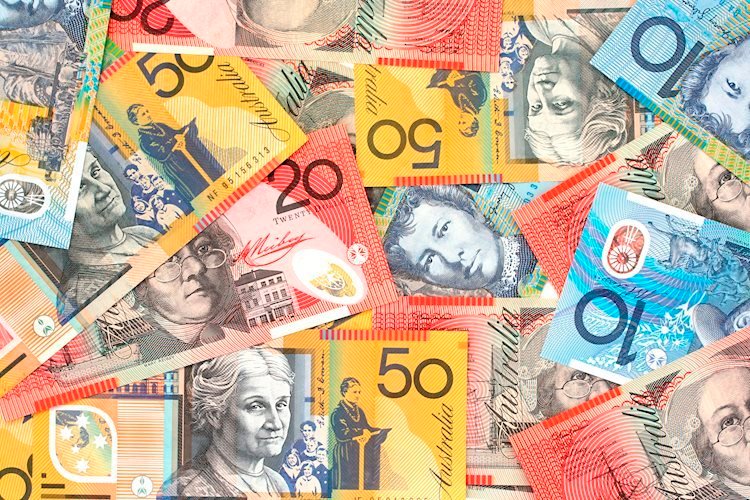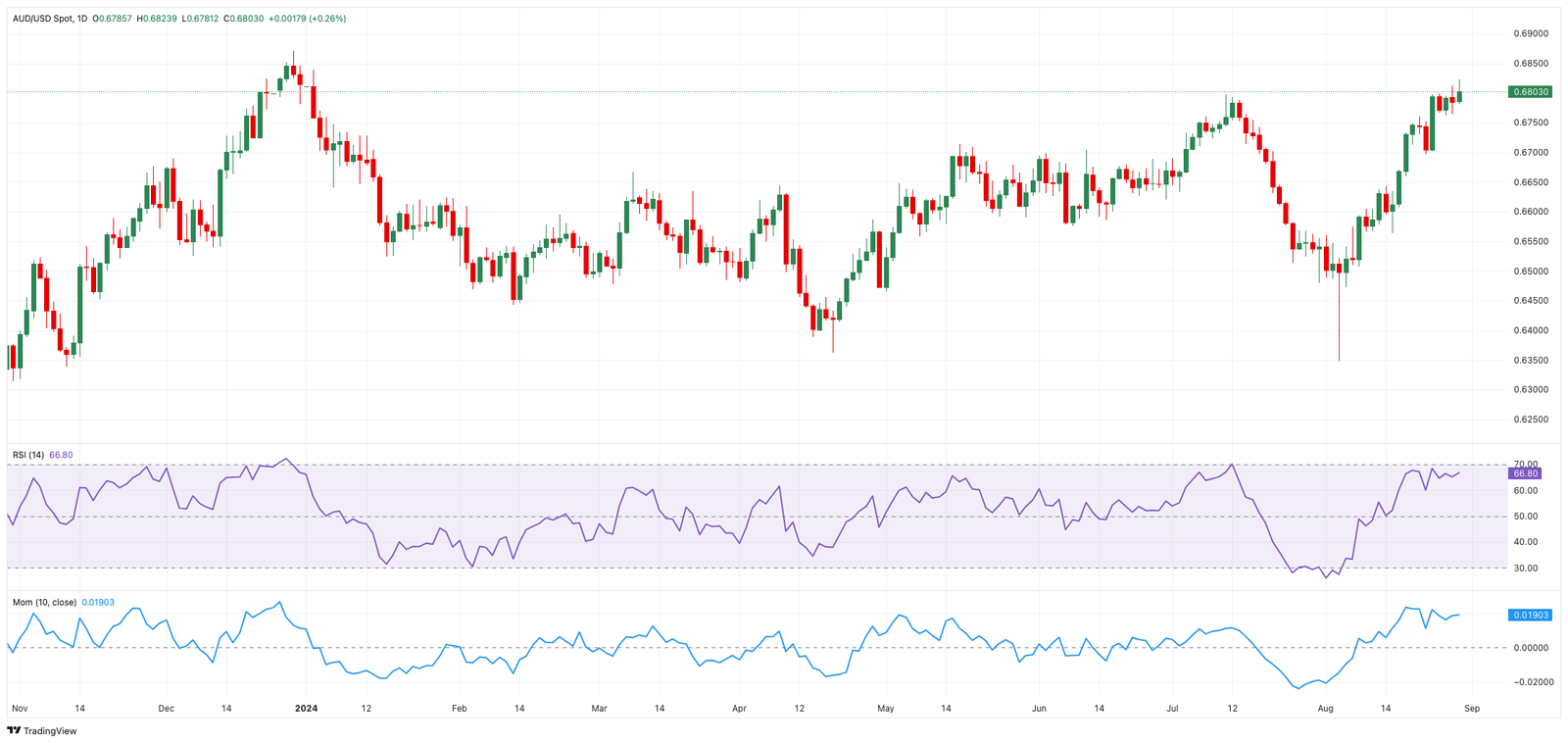- AUD/USD rose to fresh highs north of the 0.6800 barrier.
- The Dollar’s rebound ran out of steam towards the end of the day.
- Retail Sales will be the salient event in Oz at the end of the week.
On Thursday, AUD/USD regained balance and punched upwards through the pivotal level of 0.6800 once again, hitting new highs in levels not seen since early January. The resumption of the upward bias in the Aussie dollar came despite acceptable gains in the Greenback, although the US Dollar Index (DXY) lost some upside impetus as the day drew to a close on Thursday.
In the present moment, the upward momentum of the pair is very strong, buoyed by a recent breakthrough above the 200-day SMA at 0.6612, which changed the short-term outlook to a decidedly bullish stance for AUD/USD.
Recovery momentum in AUD throughout August has been supported mainly by the weak USD and improved conditions of risk-related assets.
In addition, both copper prices and iron ore prices printed small gains, albeit sufficient to contribute to the upside momentum in the Australian dollar.
Recent developments in monetary policy have contributed to the multi-week rise of the Australian Dollar. Indeed, the RBA has decided not to change the current OCR at 4.35% at this month’s event, adopting a conservative approach and demonstrating no clear intention to ease policy any time soon in light of ongoing domestic inflationary pressures.
Later, in a speech, Governor Michelle Bullock repeated that the RBA was prepared to hike rates further if required to rein in inflation, keeping the tone hawkish because of high underlying inflation. She emphasized that the bank still watched for the risks of inflation after taking the no-change decision.
Core inflation, at 3.9% in the previous quarter, is seen falling within the target range of 2-3% late in 2025. Forecasts now point to both trimmed mean and headline CPI inflation reaching the 2-3% target range by late 2026, which is longer than initially forecast.
Optimism towards the AUD has been further complemented by the hawkish tone of last week’s RBA Minutes, which showed debate among members on whether to increase or leave the cash rate target unchanged. It made the case for a hike due to the persistent undercurrents of inflation and market expectations of a few rate cuts later in 2024. In the end, it was considered that the current cash rate target was maintained appropriately. Policymakers also noted that a rate cut in the near future was unlikely, though the rates could be changed further into the future.
At this point, the RBA is expected to be the last of the G10 central banks to begin cutting rates. For now, swaps continue to hold about a 90% probability of the RBA cutting rates before the end of the year; however, this remains subject to any uncertainty, given the call will largely depend on incoming data.
Nevertheless, with the view of rate cuts in the near future by the Fed, while the RBA’s projected prolonged restrictive mode suggests that a stronger AUD/USD is more likely in the months ahead.
Gains for the Australian Dollar are likely capped, however, as the recovery in the Chinese economy is gradual and slow. Deflation, along with a lack of sufficient stimulus, hinders China following the pandemic. The meeting of the Politburo failed to announce any new concrete stimulus measures, despite announcing support, thereby worsening apprehensions over demand from the world’s second-largest economy.
Meanwhile, the latest CFTC report for the week ended August 20 shows speculators maintain their overall net-short stance on the AUD but reduced their positions to three-week lows. It’s been net shorts since Q2 2021, save a two-week break so far this year.
On the Australian calendar, Housing Credit figures and key Retail Sales are due at the end of the week.
AUD/USD daily chart
AUD/USD short-term technical outlook
Further advances are projected to push the AUD/USD to its August high of 0.6823 (August 29), ahead of the December 2023 top of 0.6871 (December 28) and the 0.7000 milestone.
Occasional bearish attempts, on the other hand, may result in an initial slide to the temporary 55-day SMA of 0.6658, before the important 200-day SMA of 0.6612 and the 2024 bottom of 0.6347 (August 5).
The four-hour chart shows the continuation of the range bound trade. However, the immediate resistance level is 0.6823, ahead of 0.6871. On the other side, the 55-SMA at 0.6750 is first, followed by 0.6697 and the 200-SMA at 0.6638. The RSI rose to about 63.








